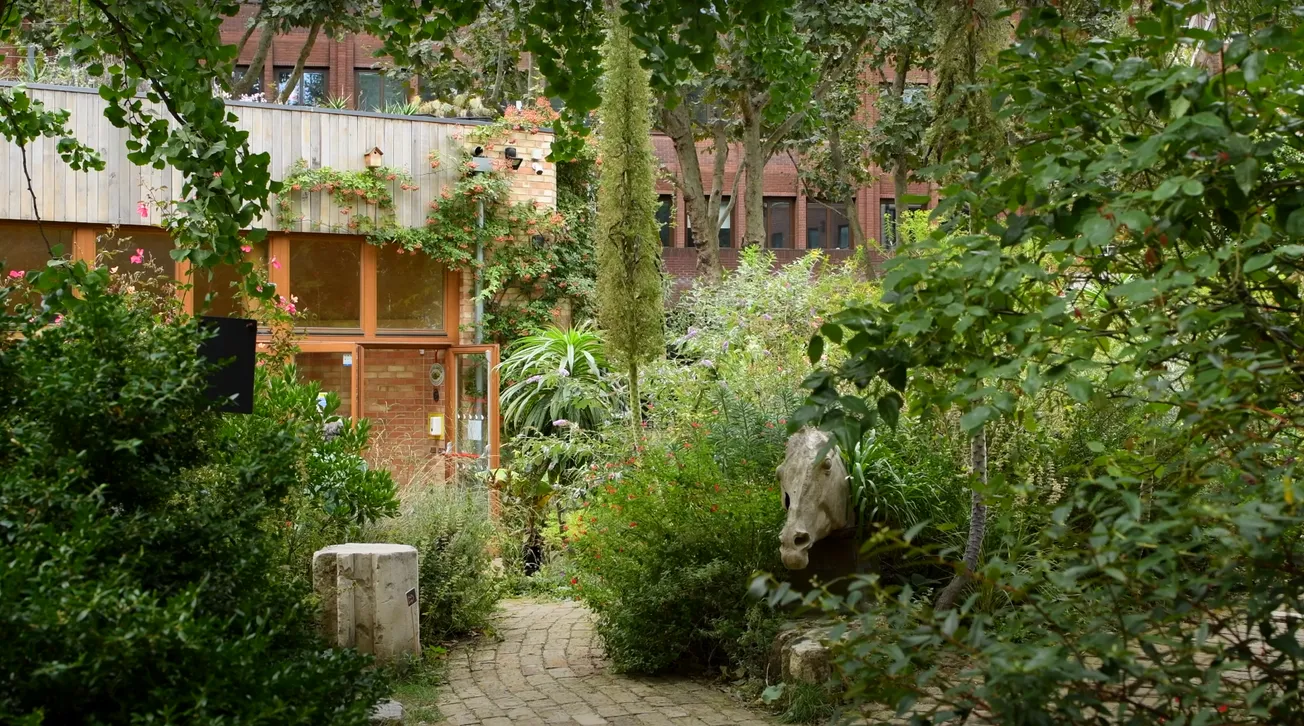Holy water, incense and mea culpas. An old man in a brown flannel jacket unfurls into a standing position and begins to strike his chest before shrinking back into the pews. “Confesso a Dio Padre onnipotente e a voi, fratelli, che ho molto peccato.” Father Andrea Fulco moved to London from Lazio roughly a decade ago, he’s well known around here. “I confess to God the Father almighty and to you, brothers, that I have sinned greatly”. It’s Mother's Day at St Peter’s Church in Clerkenwell, a historical hub for Londoners of Italian heritage. The children swing their legs beneath the seats; their feet don’t touch the ground.
Next door, on the third floor of Casa Italiana S. Vincenzo Pallotti, a large, multi-functional building on the Clerkenwell Road known locally as “the club”, a group of teenagers are reciting the seven gifts of the holy spirit while, downstairs, John Fulgoni, 84, is arguing with an elderly signora about Wednesday's minestrone. “I don’t get a minute’s peace,” he whispers to me before turning to inspect a bag of vegetables she’s bought from a wandering grocer a few tables away. To his unfolding horror, it contains parsnips. “I don’t like parsnips!” he tells her. “You’re not even gonna see them, John,” she argues. “I don’t eat parsnips,” he reiterates conclusively. Fulgoni has been coming to Casa Italiana since it was first converted from a leather goods supplier back in 1960.
Having moved to London from Leicester as a child, Fulgoni has effectively lived in what Londoners have come to call “Little Italy” all his life. In his youth, he was an altar boy at St Peter’s, where he met Mussolini's favourite singer, Beniamino Gigli, on one of his trips to London. Gigli would regularly sing at mass, attracting hundreds of onlookers who crowded together outside the church doors. Back then, most Italians in the area were crammed together in large, local Victorian dwellings. “They weren’t very pleasant,” Fulgoni recalls, explaining how families often lived four to a bedroom.
Little Italy first began to take shape in the early 1800s, settled by Northern Italians fleeing the Napoleonic Wars and, later, the Italian wars of unification. Grimaldi the clown walked these streets, as did Garibaldi the revolutionary. By 1842, enough Italians had settled in the area to start a Catholic free school, then, in 1863, despite Protestant hostility, the community collected enough funds to build St Peter's, the first Italian church outside of Italy.
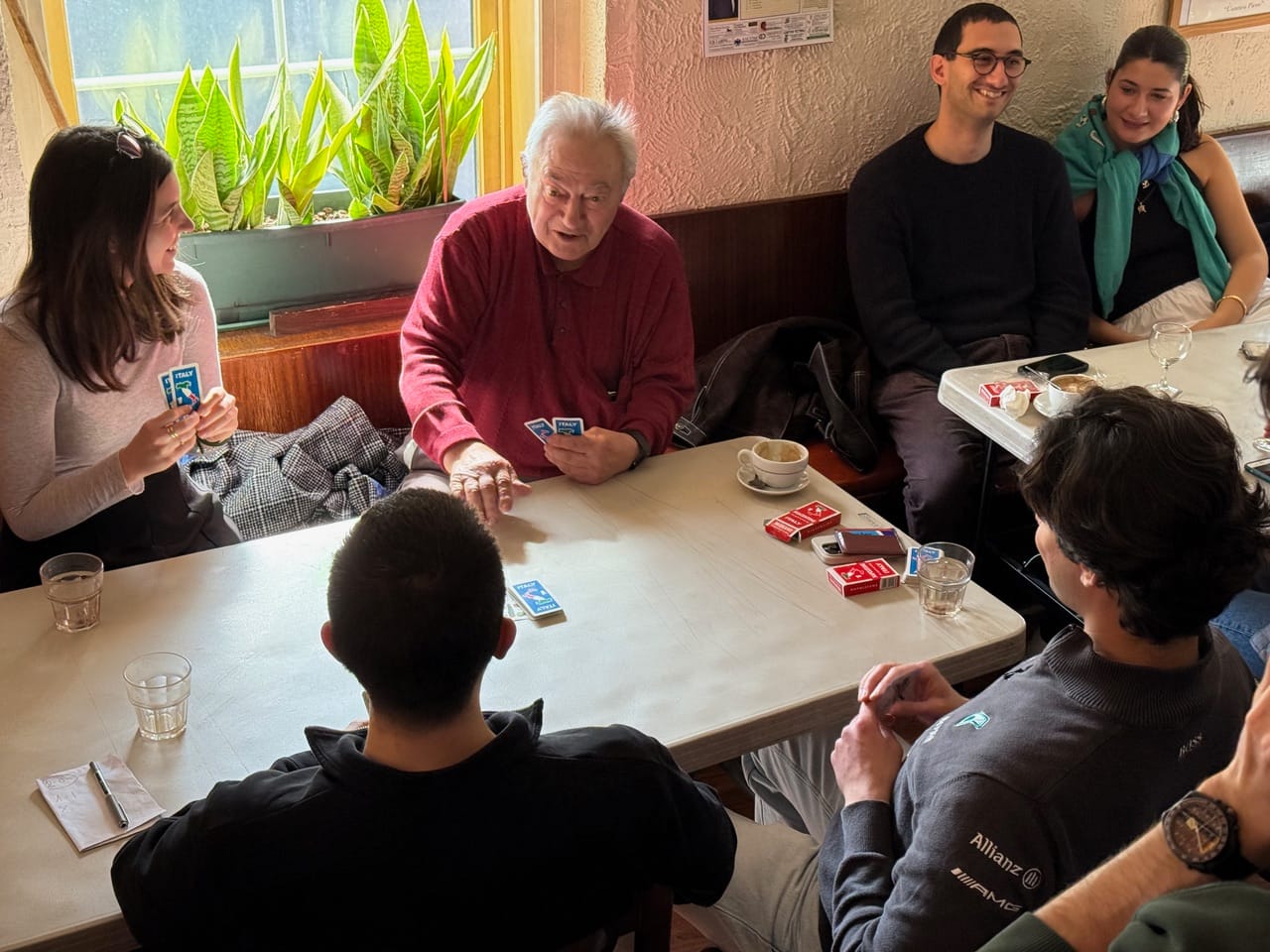
According to the Camden Local Studios and Archives Centre, by 1871, half of Little Italy’s working-age men were street musicians. This likely just means most of them were unemployed, but feels almost comically stereotypical, like finding out half of all French immigrants are employed as mimes. After the turn of the 20th century, the neighbourhood weathered organised crime under its 1930s protector Charles “Darby” Sabini (recently portrayed in the hit show Peaky Blinders), as well as anti-Italian riots and internment during the second world war. In recent years, though, Little Italy has been at risk of gradually melting away.
“Well, of course, I miss it” Fulgoni says, remembering the old days in the 1960s and 70s before Little Italy began dying off and gentrification started driving its inhabitants out into suburban houses, “but I’ve kept in touch with the people I knew in that era.” Around Fulgoni, scores of elderly Italians drink Campari and play a trumps-style card game called briscola. Many of these regulars will be gone in a few years, but, somewhat miraculously, a change has come to Casa Italiana: it has started to attract young people.
The floors of the club are, by some unspoken rule, designated by age: young people on the top floor, old people on the one below. Massimo Pini, 56, has been working behind the scenes at Casa Italiana since 2014, but it’s only in the last year that he’s seen the age range of the clientele shift. As I talk to him, we’re interrupted by a twentysomething Tuscan British hipster ordering a cappuccino — his first time here. “It’s cool”, he says, “I miss this; you don’t get places like this [in Britain].” He doesn’t really feel British at all, he says, and with age he finds himself navigating to the Italian side of his psyche, which attracts him to places like this.
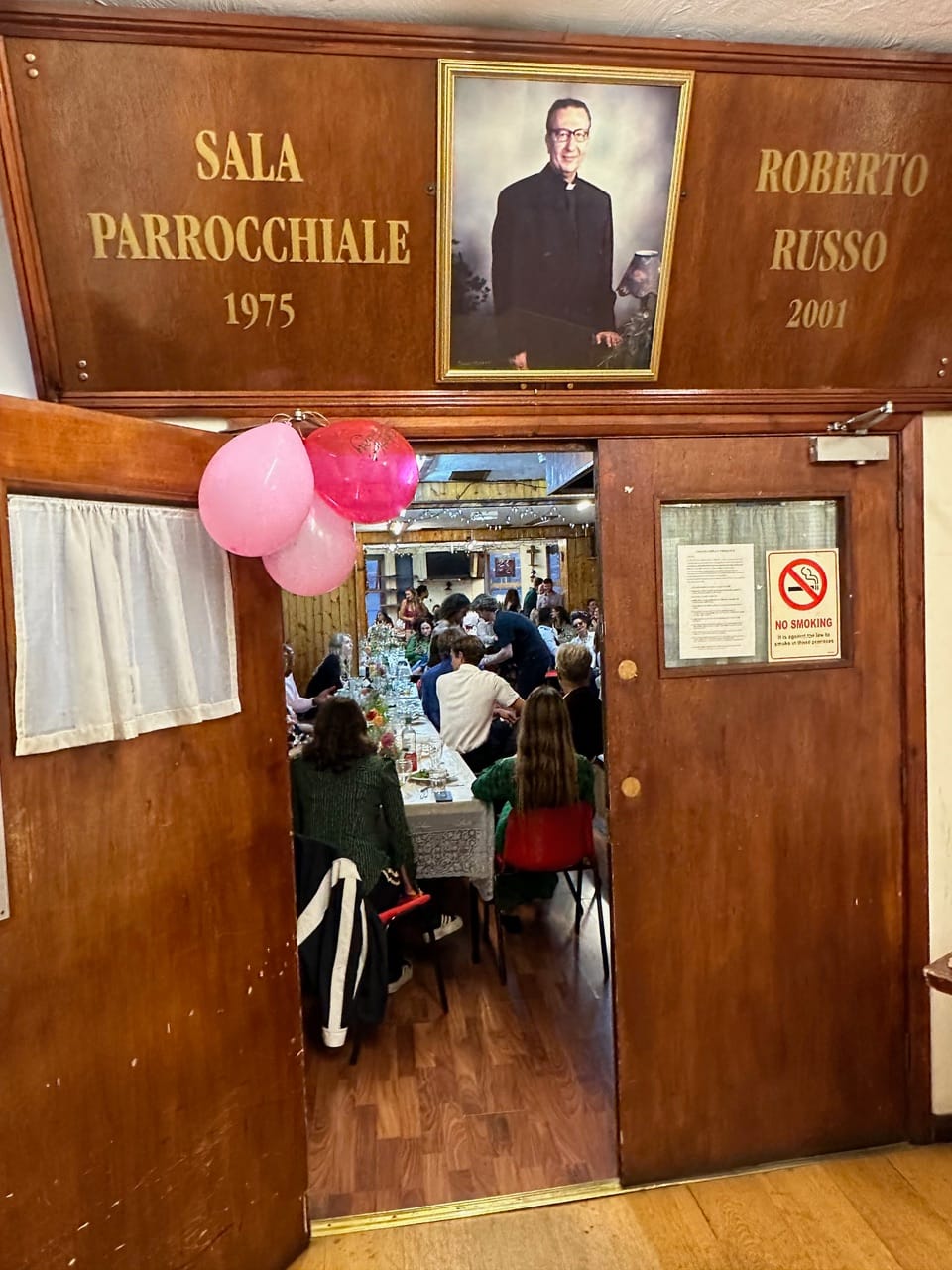
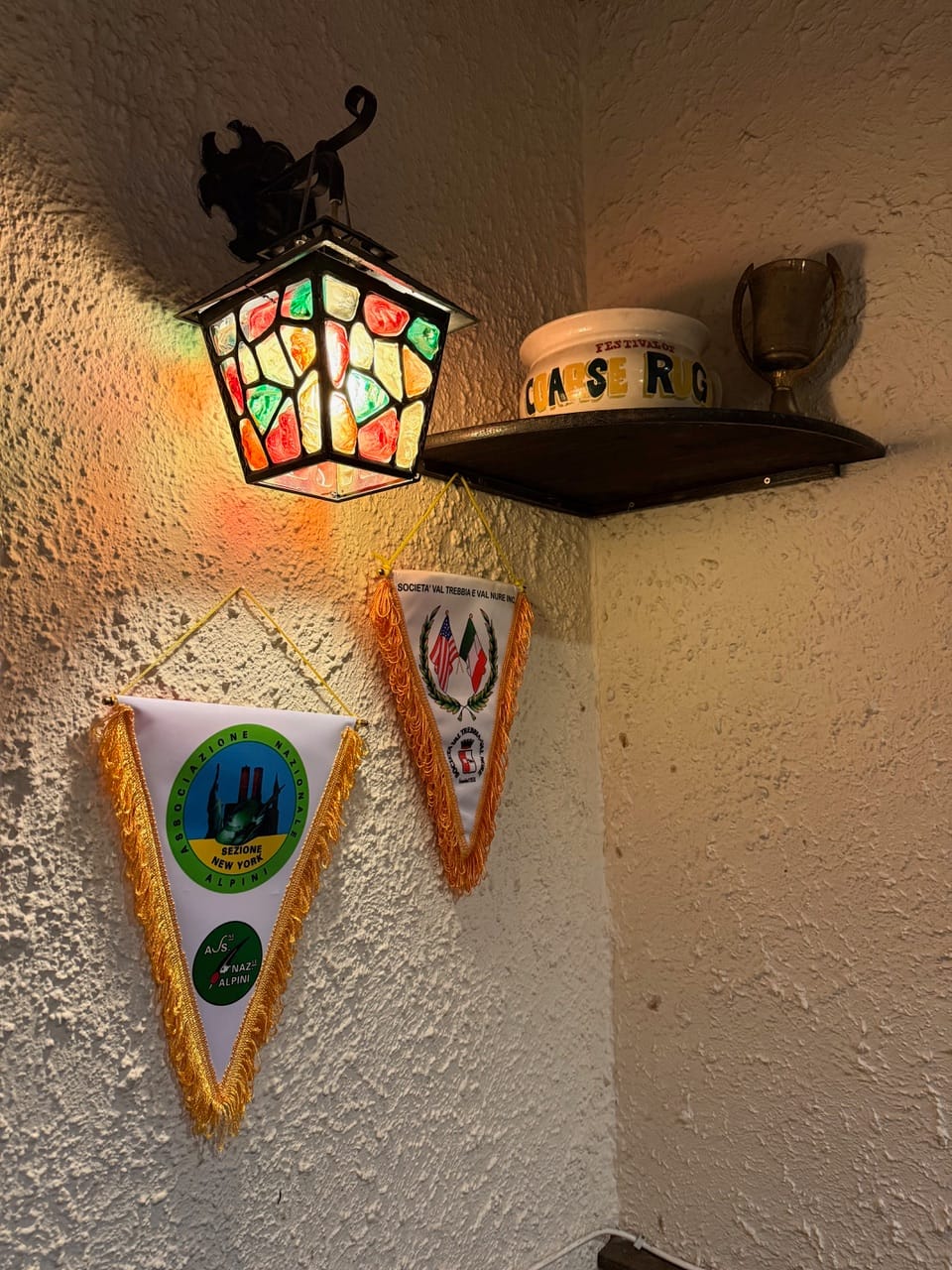
The Parrochiale room (image courtesy of Casa Italiana)
Recently two Casa Italiana legends passed away from cancer. First was Mauro Ongeri, who died in 2023, and then Michele ‘Micky’ Morena, the club president, in 2024. In the wake of their deaths, Casa Italiana was in crisis, and Pini took a more active role in its administration. Shortly after Morena passed away, the club’s committee held a meeting to try and decide how to move Casa Italiana forward. “What was agreed was that all of the committee members would roll up our sleeves and be more proactive in driving things… I then took it upon myself to focus my energies on reaching a younger audience.”
In this endeavour Pini had some luck. This luck began with a fragrance company called Ffern, who approached them via a photographer they had commissioned to seek out London’s Italian community for an Italian inspired fragrance they were working on. One thing led to another, and Ffern agreed to put £5000 behind the club. Ffern also set the club up with a crowdfunding expert to help them generate revenue. The subsequent crowdfunding campaign managed to accrue £16,000 and led to their second slice of luck, a write up in the Guardian, which attracted a wave of new regulars, including Arsenal’s new full-back, Riccardo Calafiori. After all this, more young people began seeking it out.
Dual-wielding a cappuccino and a slice of cake, I take a seat next to Agnese and Harry, both 32, who are busy convincing their infant son, Riccardo, to swallow a mouthful of pasta. Harry, who’s English, first discovered Casa Italiana before the pandemic, and since then they’ve seen the venue begin to bloom. “[Before], it was more for the older generation… there’s a lot more life to it now.” Agnese moved to the UK from Friuli-Venezia Giulia in 2013, and initially she tried to distance herself from Italian culture. That didn’t last. “When you're away from home for a long time, you want to meet people who understand you.” Agnese’s mum, who doesn’t speak English, sits alongside, smiling.

Many of the “Little Italians” trace their London heritage back to their great-grandparents. For several years, Italy has been experiencing a brain drain, with more than a million Italians leaving the country in the last decade alone. I’m interested to know how Agnese, a recently arrived Londoner, feels about the difference between her and someone like Pini, whose parents arrived from Parma in the 1950s. I point out that Riccardo (Ricky, for short) is the first second-generation immigrant “Britalian” in her family. At that, Agnese starts to cry. While her mother fishes in her handbag for a tissue, Harry speaks for the family. “It's something we think about a lot, and I think it's also partly why we've started coming here more.… We want the Italian side of his identity to mean something to him.”
One table along, two young film students, Diana and Sole, are planning a Casa Italiana screening. They’ve thought long and hard about it. The two have come up with a schedule that attempts to decouple Italian cinema with the neorealism of the 1960s, which they excitedly claim it's moved on from long ago. “We’re seen as this monolith, so we’re trying to challenge that,” Diana says, “also we want to focus on cultural aspects of Italian life that are not discussed such as the immigrant experience, youth problems and queer stories… We want to create a dialogue between the older generations and the young people who are escaping Italy because there’s not much opportunity there.”
For Diana, who’s from Veneto, the received Italian identity has become so calcified that it’s difficult to escape. “The cultural stereotypes of Italy are just so ingrained,” she says, stressing that they come from a certain time during the economic boom of the 60s and the ascendency of Italian American culture “But that’s so far from the truth.” Sole largely agrees. “It’s part of the truth, but for people who grew up in Italy, everything feels very different.”
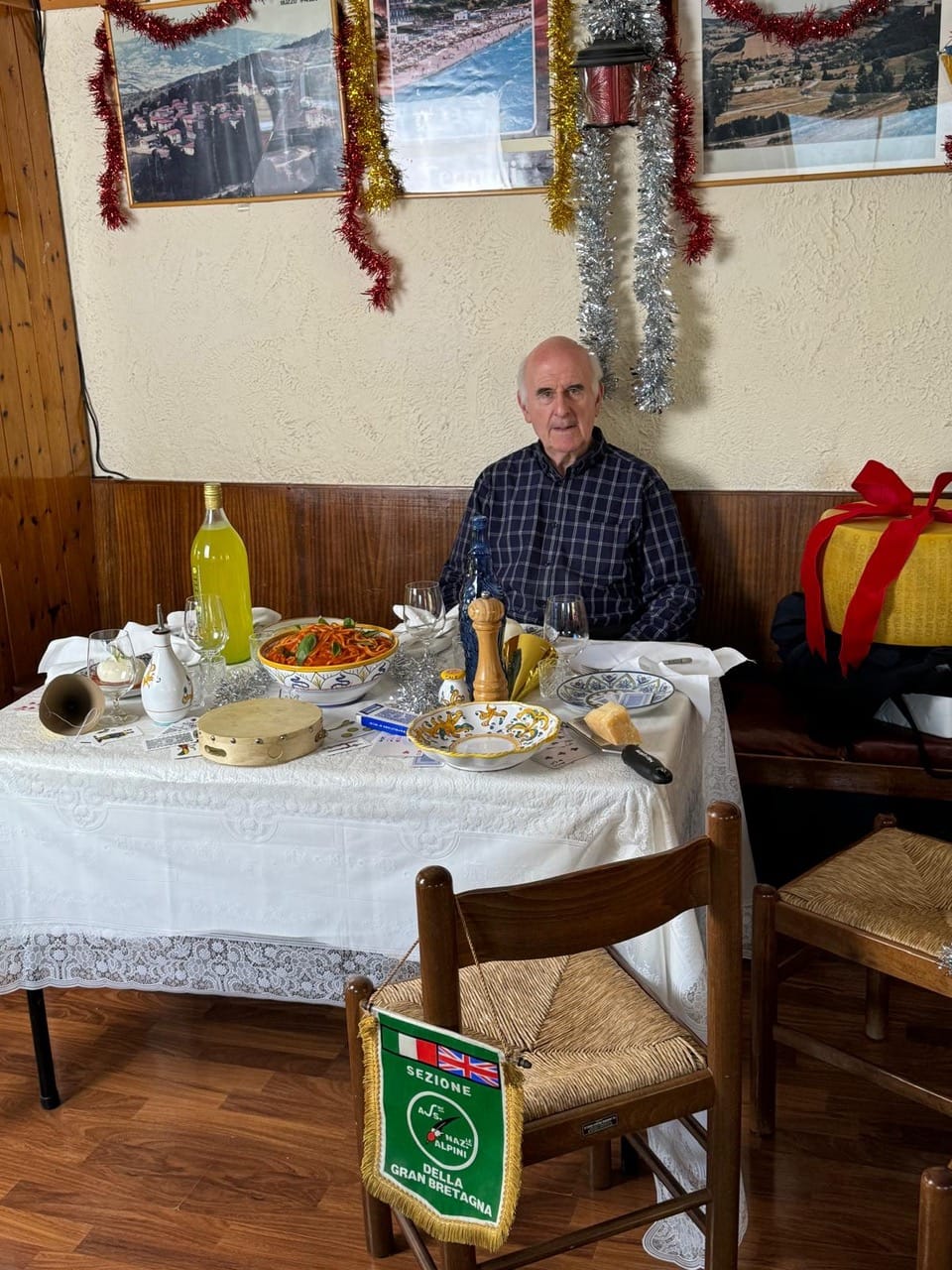
One of the misconceptions they agree on is that in Italy — a relatively young country — people often feel more connected to their region than to a wider sense of national patriotism. “What's interesting,” Sole says, “is that second-, third- and fourth-generation British Italians might be really used to regional specificity, even down to language.” Sole explains that modern Italian as it’s spoken today wasn’t dominant until the 1950s and 60s. Before then, regional dialects would have been the norm. “I might meet some second- or third-generation British Italians,” she says, “and we might not even speak the same dialect.” Diana struggles to imagine how waves of Italian immigrants to London in the early 20th century managed to integrate with each other, let alone to another culture. “Getting on with people coming from all around Italy and not really speaking the same language… it must have been really challenging.”
When I ask what brought Sole and Diana to Casa Italiana, they both point to one person in particular: the journalist and author Sophia Smith Galer, whose mother has been attending the club since it opened. Smith Galer, 30, grew up singing in the choir at St Peter’s and, when Pini approached her to help drum up youthful custom at the club, she was eager to get involved, setting up a monthly “language bar”, where people can drink and socialise and practice Italian.
“Lots of people met their wives here or had their first kiss here,” Smith Galer says of her mother’s generation. “There’s a very strong heritage of partisans here too,” she continues, describing the Italian resistance fighters who fought the Nazis and Italian Fascists during WWII. “Many people would have been related to partisans.” Smith Galer grew up in Barnet. By the time she was born, Little Italy had already begun moving out towards Holloway and Islington.
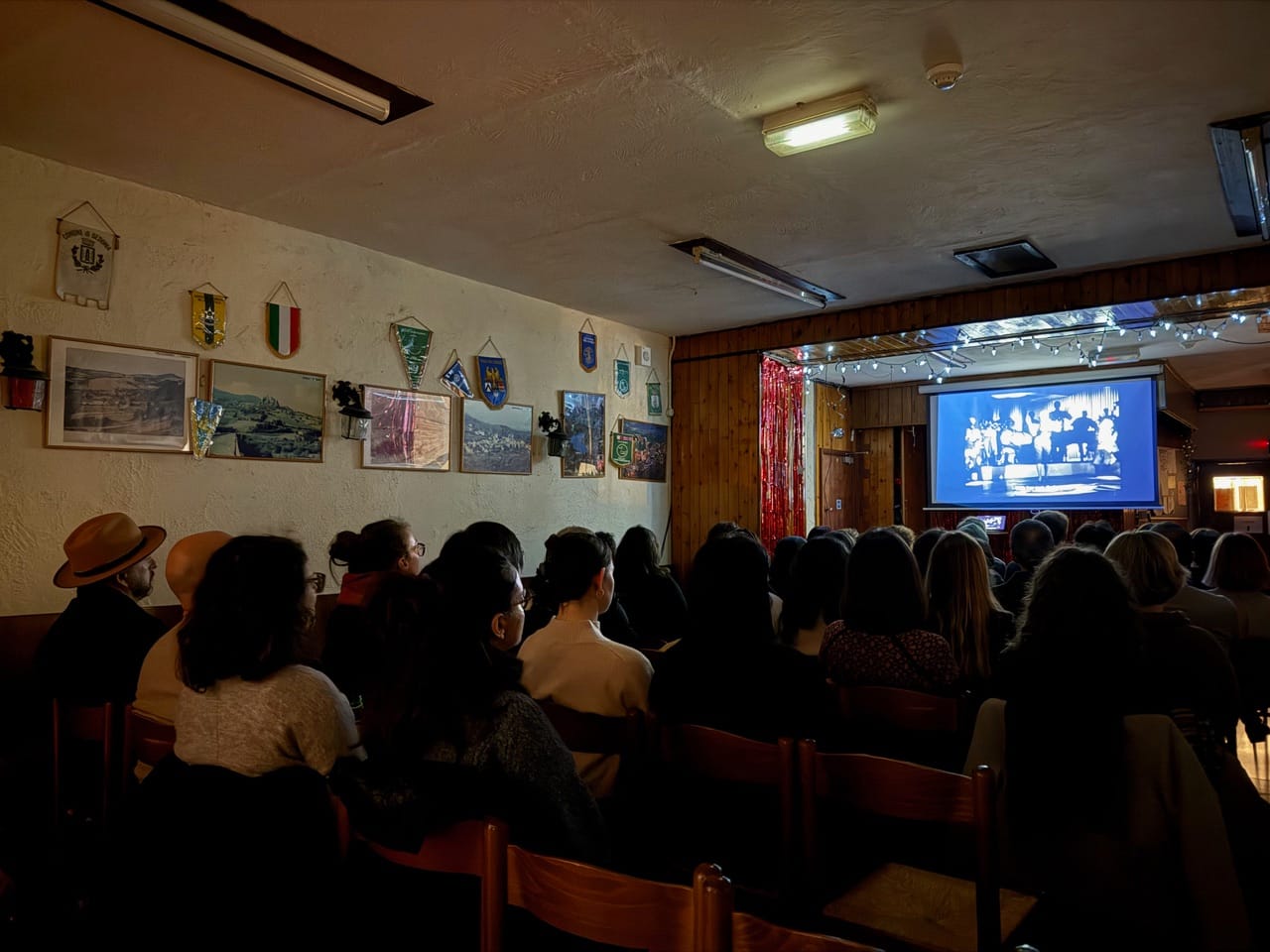
Smith Galer previously worked at the BBC and became famous for journalistic use of TikTok — she now has over 500,000 followers on the platform. After she began promoting Casa Italiana, online engagement with the club began to grow like a big parmesan snowball. One girl shared a video from Casa Italiana's Tuesday lunches, where pensioners eat pasta and dance the waltz. It blew up. People began hearing about the place via word of mouth. “When you're in diaspora,” Smith Galer says, “you try and treasure the Italy you knew. And that's obviously not the Italy of today.”
Eventually, we’re interrupted by an announcement. A briscola tournament is about to start. All around the room, young people lucky enough to have learned the game from older generations have been teaching their peers. Soon they’ll journey downstairs to play the grandmothers and grandfathers of Little Italy, who, most likely, are about to fucking swamp them. London is a city of diasporas, some more settled than others, all of them, at some stage, blinking in the light of a new life. When you arrive somewhere new and try to assimilate, that new life can overtake the old. For some young customers here today, it’s just a case of clawing some of it back.
Thanks for reading today's Londoner, please feel free to forward it to friends. As a paying member, you can comment under the online version of our stories (and that is a sacred right you should exercise frequently). We love getting your comments — they often provide insights or ideas that inform our future reporting. Just head to our site to comment or click on that little button on the right below.

Comments
How to comment:
If you are already a member,
click here to sign in
and leave a comment.
If you aren't a member,
sign up here
to be able to leave a comment.
To add your photo, click here to create a profile on Gravatar.




